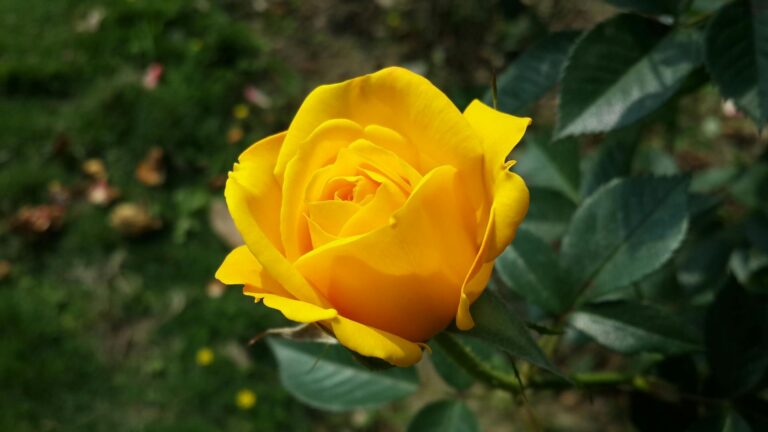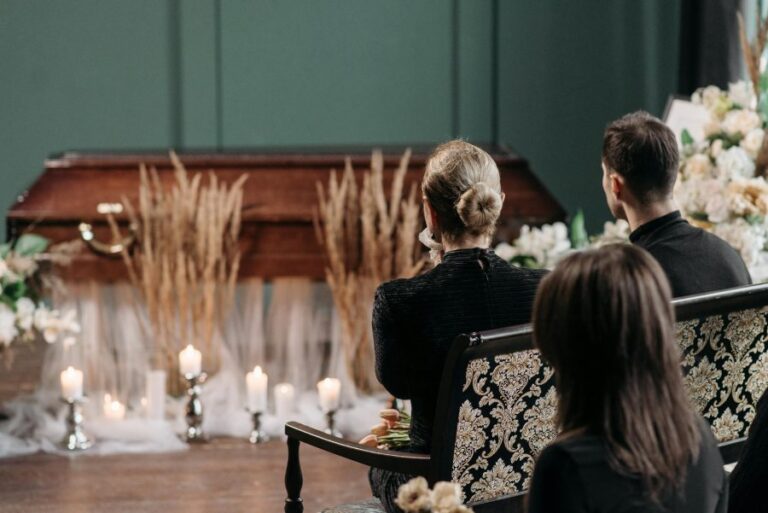How Much Do Wedding Flowers Cost?
Introduction
Wedding flowers are like the unsung heroes of your big day. They silently fill the air with beauty, fragrance, and symbolism, turning even the simplest venue into a magical garden of love. But let’s be real—these floral marvels come at a price. The moment you attach the word “wedding” to anything, costs seem to sprout like daisies in spring. So, before you let your floral dreams run wild, it’s time to dig deep into the cost of those roses, peonies, and every petal in between. Brace yourself—flower budgeting isn’t for the faint of heart.
The Significance of Wedding Flowers
Flowers at a wedding are like the sprinkles on a cupcake—unnecessary but utterly delightful. They have this magical ability to transform any venue, from a charming barn to a luxe ballroom, into something straight out of a fairytale. But they’re not just for looks. Oh no, they’re steeped in meaning. Roses for love, lilies for purity, peonies for wealth and a totally reasonable sense of floral superiority. Every petal carries a little weight of symbolism, and together, they create a fragrant tapestry of beauty and emotion.
Why Understanding Flower Costs Matters
Picture this: you’re at the florist, starry-eyed, picking out blooms like a kid in a candy store. Suddenly, you’re hit with the estimate, and it’s enough to make you briefly reconsider an elopement. Understanding the cost of wedding flowers isn’t just about avoiding sticker shock (although that’s important). It’s about making informed decisions so your floral dreams don’t turn into a financial nightmare. With a little knowledge, you can strike the perfect balance between beauty and budget—without resorting to plastic daisies from the dollar store.
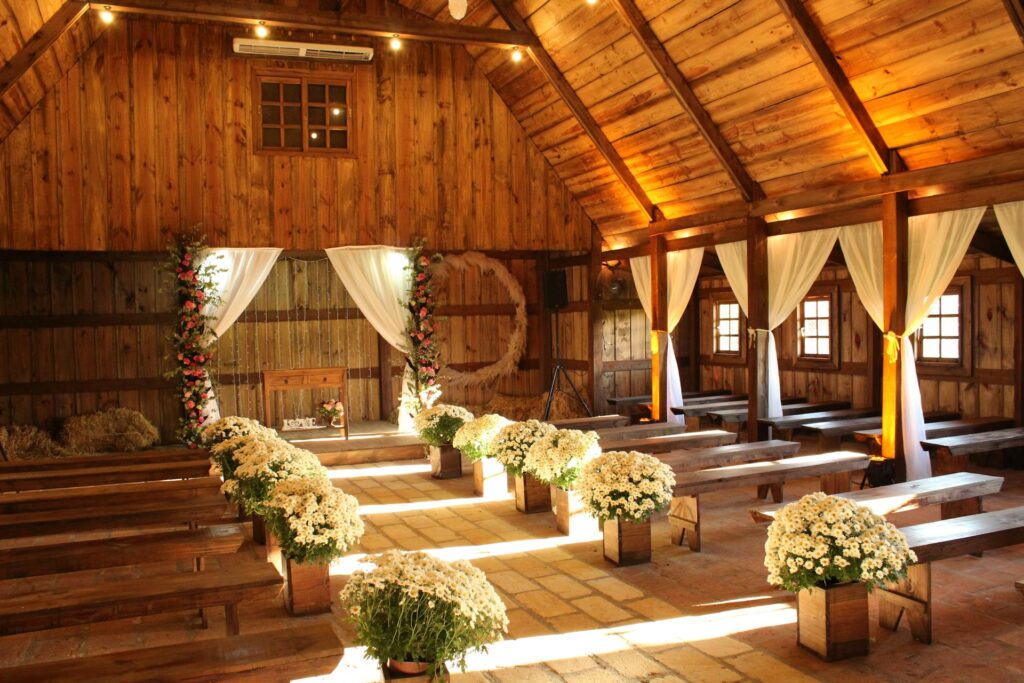
Types of Wedding Flowers and Their Costs
Classic Blooms: Roses, Lilies, and Peonies
Let’s talk classics. These are the Audrey Hepburns of the floral world—timeless, elegant, and always in demand. Roses, of course, are the old faithful of weddings. But like a fine wine, not all roses are created equal. You’ve got your standard, garden-variety rose, and then you’ve got the David Austin rose, which costs more because, well, it’s fancier. Lilies bring that dramatic flair, while peonies? Well, peonies are like the diva that demands a private dressing room and Fiji water. Gorgeous, yes. Cheap? Absolutely not. But oh, the fluff!
Exotic Choices: Orchids, Calla Lilies, and Birds of Paradise
Now, if classic isn’t your vibe, why not get a little exotic? Orchids, calla lilies, and birds of paradise are the tropical vacations of the flower world. They ooze sophistication and mystery—like they’ve been flown in from a secret greenhouse in an unpronounceable country. Of course, with that air of mystery comes a higher price tag. Orchids are basically the gold bullion of flowers, while birds of paradise will have your guests curiously wondering what they are.
Seasonal and Local Flowers: Benefits and Savings
For those who prefer their florals with a side of common sense, seasonal and local flowers are the heroes we don’t deserve but definitely need. These blooms are not only fresh and vibrant, but they’re also kind to your budget. Plus, you get to feel good about supporting local farmers. By opting for what’s in season, you can save a pretty penny and still have Instagram-worthy arrangements. Think of it as farm-to-table… but for flowers.

Factors Affecting Flower Costs
Type and Variety: How Rarity Impacts Price
Not all flowers are created equal, and much like designer handbags, the rarer they are, the more they cost. You want some rare, purple-tinted bloom that only grows on the side of a remote mountain? Cool, but be prepared to pay for it. The more exotic the flower, the more it will drain your bank account. For some couples, the bragging rights are worth it. For others, there’s always lavender.
Seasonality: When to Buy for the Best Deals
Seasonality is the difference between a peony costing $10 per stem in May and $25 per stem in December. Timing is everything. If you’re flexible on dates (or flowers), scheduling your wedding when your dream flowers are in season can save you some serious cash. If not, you’ll be paying a premium for those out-of-season blooms, and let’s just say “import fees” is not a phrase you want on your florist bill.
Quantity Needed: From Bouquets to Centerpieces
Here’s the thing: the more flowers you need, the more you’ll pay. Groundbreaking, I know. It’s not just the number of bouquets or centerpieces either. Those intricate floral chandeliers and garlands draped over every surface? Gorgeous, yes. Cheap, not even close. The key is deciding where flowers will make the most impact and budgeting accordingly. Maybe you skip the flower wall and just do a stunning bouquet. Less is more, darling.
Location and Availability: Regional Price Variations
Here’s a little secret: where you get married matters. Flowers are generally more expensive in big cities and wedding hotspots. If you’re tying the knot in a remote location, you might end up paying extra just to get the flowers delivered. On the flip side, some places have local flower farms that can give you fresh blooms at a lower cost. Think of it as wedding flower geography—worth a quick Google before committing.

Breaking Down the Cost of Wedding Flowers
Bridal Bouquets: The Centerpiece of Your Wedding Day
The bridal bouquet is the floral statement. It’s the “I’ve arrived” of your wedding look. Prices vary wildly depending on the complexity and type of flowers, but expect this bundle of joy to cost anywhere from $150 to $350 (or more if you’re feeling fancy). Just remember, it’s the one floral piece that will be immortalized in every photo, so it’s worth splurging on if you’re budget-conscious elsewhere.
Bridesmaid Bouquets: Style and Budgeting Tips
Bridesmaid bouquets are the bridesmaid dresses of the flower world: pretty, but not allowed to outshine the main event. These little guys can be more budget-friendly if you choose simpler designs or smaller arrangements. Or, if you’re really trying to save, get creative—tiny bouquets, single stems, or even non-floral alternatives can keep costs low and your bridesmaids happy.
Boutonnieres and Corsages: Small Details, Big Impact
Don’t let their small size fool you—boutonnieres and corsages are the dainty assassins of your budget. These floral accessories may be tiny, but they’re intricate, which means they require time and skill to create. You can expect to shell out around $15 to $30 each. Not a huge sum, but when you’re ordering for all the groomsmen, dads, moms, and grannies, those little expenses add up faster than a tipsy uncle at an open bar.
Ceremony Flowers: Arches, Aisles, and Altars
Ah, ceremony flowers. The pièce de résistance of your “I do” moment. From elaborate floral arches to petal-strewn aisles, these decorations can easily climb into the thousands if you’re not careful. Want to save? Focus on one showstopper, like a stunning arch or altar piece, and let the venue’s natural beauty do the rest. Sometimes less really is more, and your wallet will thank you.
Reception Flowers: Tables, Entrances, and Decor
If ceremony flowers are the main event, reception flowers are the afterparty. And much like afterparties, things can get expensive. Centerpieces, floral runners, and elaborate entrance displays are beautiful but pricey. A great way to save is to repurpose your ceremony flowers for the reception—flowers are fleeting, so get the most out of them by using them twice!
Flower Delivery and Setup: Hidden Costs to Watch For
Here’s the kicker: you’re not just paying for the flowers. Delivery and setup fees can sneak up on you like an unexpected wedding crasher. Florists often charge extra to transport and arrange your flowers on-site. Be sure to ask upfront about these costs so you’re not blindsided when you’re already knee-deep in wedding expenses.

Saving on Wedding Flowers
DIY vs. Professional Florists: Weighing the Costs
Ah, the age-old debate—DIY or hire a pro? While DIY can save you money, it also requires a lot of time, skill, and stress. Remember, you’ll be arranging flowers when you should be sipping champagne and getting pampered. Professional florists, on the other hand, will handle the heavy lifting, ensuring everything looks flawless—but they’ll charge a pretty penny for it.
Using Seasonal Flowers: A Budget-Friendly Approach
We’ve said it before, but it’s worth repeating: go seasonal! Seasonal flowers are cheaper, fresher, and better for the environment. Plus, they look stunning because they’re in their natural element. Work with your florist to figure out which blooms will be in season for your wedding and plan around those. Your wallet will thank you, and your guests will be none the wiser.
Renting vs. Buying: The Pros and Cons
Why buy when you can rent? Renting flowers (yes, that’s a thing!) can save you serious dough, especially for big-ticket items like arches or large centerpieces. The downside? You can’t keep them forever. But considering flowers wilt faster than Aunt Mildred’s patience, renting might be a smart move if you’re not attached to taking them home.
Reusing Ceremony Flowers for the Reception: Tips and Tricks
Double duty flowers are the wedding hack you didn’t know you needed. Move your ceremony flowers to the reception to save cash and keep your venue looking fresh. With a little planning, you can transform that altar arrangement into a stunning centerpiece or let aisle flowers grace the reception tables. Your guests won’t notice, but your budget certainly will.
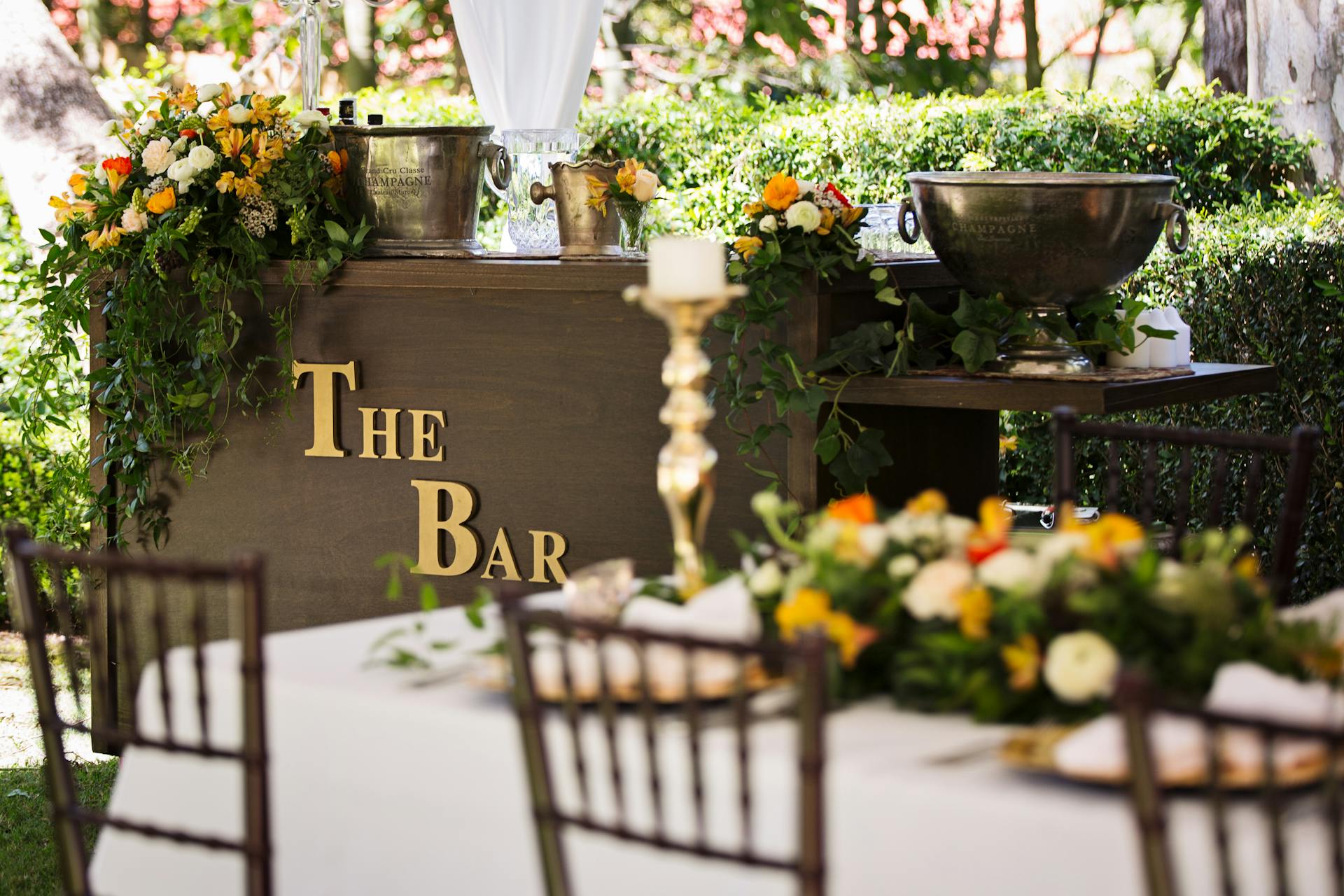
Working with Your Florist
Creating a Budget: How to Discuss Costs
Be upfront with your florist about your budget from the get-go. They’ve heard it all before, so there’s no need to feel embarrassed about sticking to a price point. A good florist will work with you to create beautiful arrangements within your means. Just be honest, set clear expectations, and avoid falling in love with the $5,000 floral chandelier. (Yes, it’s a thing.)
Prioritizing Your Floral Needs: Essentials vs. Extras
Let’s be honest: not every inch of your venue needs to be drowning in petals. Prioritize where flowers will have the most impact—like the bridal bouquet, ceremony arch, and reception tables. Extras like floral napkin rings? Maybe skip those unless your budget allows for it. Focus on the essentials, and your wedding will still look incredible without breaking the bank.
Getting the Most from Your Consultation: Questions to Ask
Maximize your florist consultation by coming prepared. Ask about seasonal flowers, hidden fees, and creative ways to stretch your budget. Don’t forget to ask for recommendations—they’re the experts, after all. And most importantly, ask to see a portfolio of their previous work to make sure their style aligns with your vision.
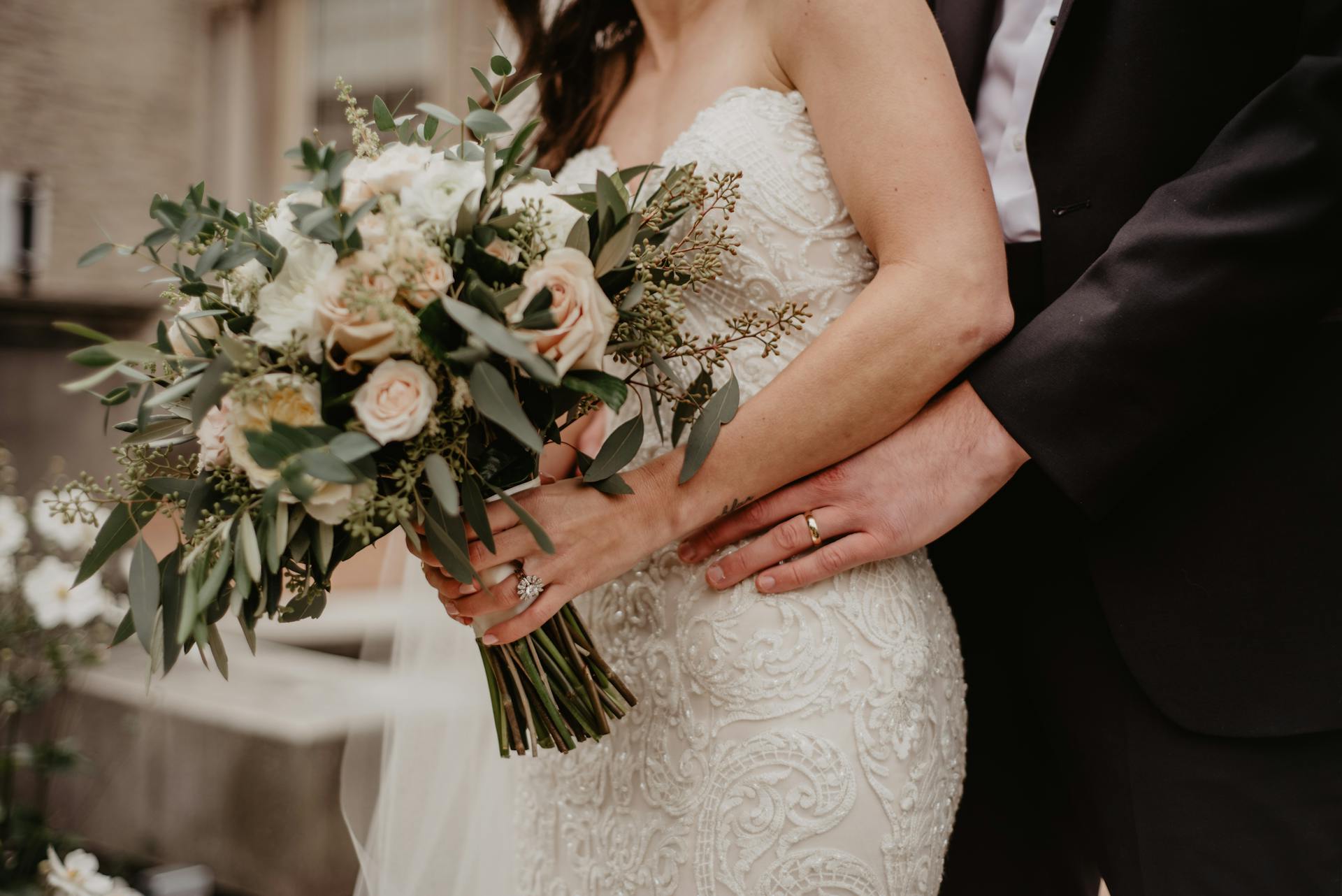
Hidden Costs and Fees
Additional Charges: Taxes, Delivery, and Setup Fees
Don’t forget the “fun” part: taxes, delivery fees, and setup charges. These extra costs can sneak up on you faster than you can say “I do.” Make sure you clarify all the additional fees with your florist upfront so there are no surprises when the final bill rolls in.
Preservation Costs: Keeping Your Blooms Beautiful
If you want to keep your wedding flowers as a memento, preserving them can be an added cost. From pressing flowers to creating resin keepsakes, flower preservation is a great way to hold onto the memories. Just be aware that these services don’t come cheap, so factor that into your budget if preservation is important to you.
Last-Minute Changes: How They Affect Your Budget
Last-minute changes are a budget killer. If you suddenly decide you want a floral arch made of rare orchids the night before the wedding, be prepared to pay through the nose. To avoid unnecessary expenses, finalize your floral arrangements well in advance, and resist the urge for impulsive upgrades.

Recap of Key Points
How to Budget for Wedding Flowers
In summary, wedding flowers are a gorgeous yet expensive part of the big day. From choosing the right blooms to understanding factors that affect costs, knowledge is your best defense against sticker shock. Prioritize the essentials, embrace cost-saving strategies, and work closely with your florist to make sure every dollar is well spent.
Final Tips for Brides
Achieving Your Floral Dreams Within Budget
You can absolutely achieve your floral dreams without breaking the bank. Use seasonal and local flowers, repurpose your arrangements, and don’t be afraid to ask your florist for budget-friendly alternatives. With a little creativity and planning, your wedding will be blooming with beauty—and your wallet will still have something left in it for the honeymoon!


